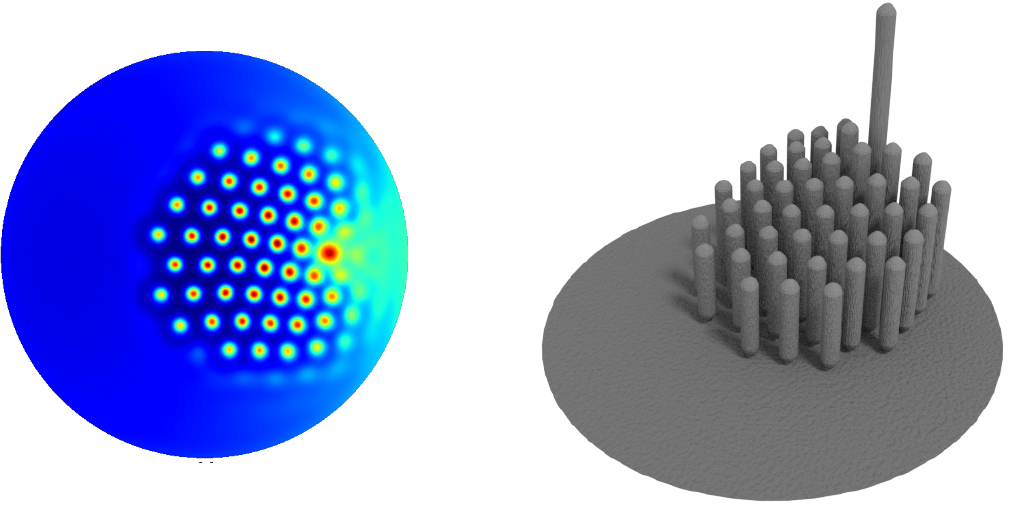A reaction-diffusion model of hair-bundle morphogenesis
The hair bundle, an apical specialization of the hair cell composed of several rows of regularly organized stereocilia and a kinocilium, is essential for mechanotransduction in the ear. Its precise organization allows the hair bundle to convert mechanical stimuli into electrical signals; mutations that alter the bundle's morphology often cause deafness. Little is known, however, about the proteins involved in the process of morphogenesis and about how the structure of the bundle arises through interactions between these molecules. We present a mathematical model based on simple reaction-diffusion mechanisms that can reproduce the shape and organization of the hair bundle. This model suggests that the kinocilium and the boundary of the cell act as signaling centers that establish the bundle's shape. The interaction of two diffusing proteins forms a hexagonal Turing pattern—a periodic modulation of the concentrations of the morphogens, sustained by local activation and long-range inhibition of the reactants—that sets a blueprint for the location of the stereocilia. We can use this model to predict how different alterations to the system impact the shape and organization of the hair bundle.

The left image shows the expression pattern of one of the hypothetical morphogenetic proteins created by the gradients in substrates emanating from the kinocilium and cellular periphery. The morphogen forms a hexagonal pattern that constitutes the blueprint for a hair bundle. The right illustration offers a rotated view of a hair bundle derived from that blueprint.
